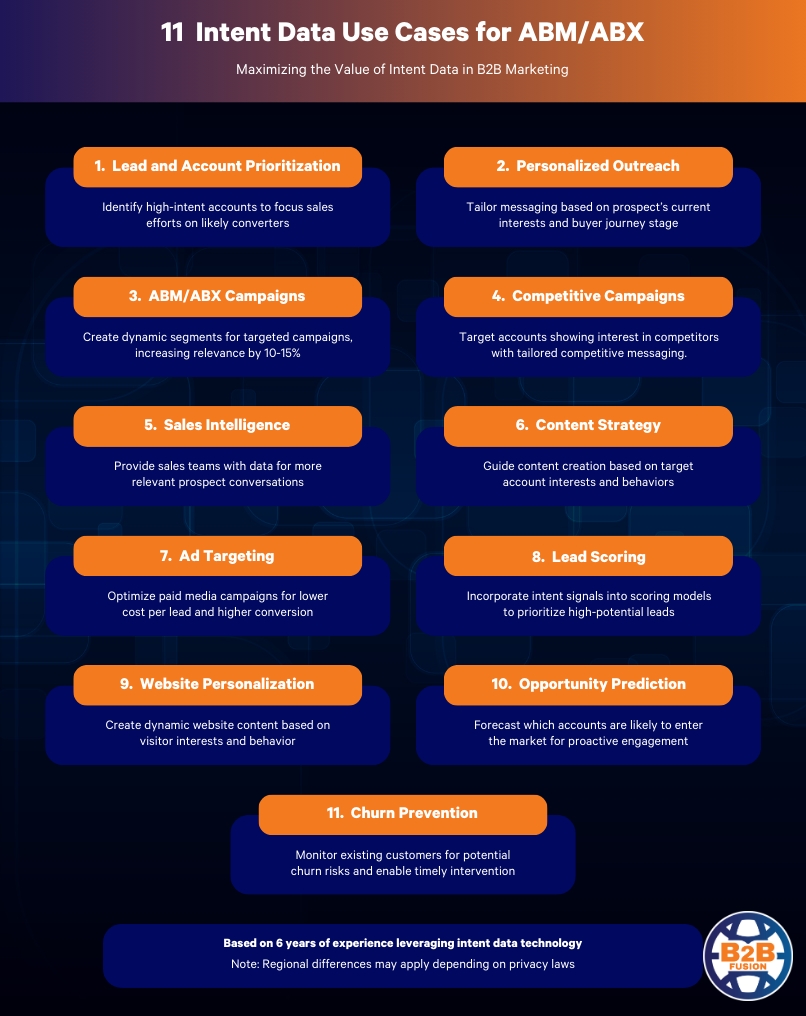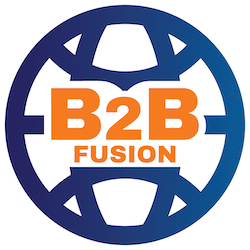ABM and the ‘ingredient’ intent data is mysterious. How does it work, are there differences across 1st and 3rd party intent, how do I get sales to use it?

First, there are a number of vendors that offer up intent: LinkedIn, 6sense, ZoomInfo, TechTarget, DemandBase, Bombora, G2, RB2B, Influ2, Warmly.ai, Keyplay, the list goes on and on.
The most challenging aspect of intent data we have found is how Sales and Marketing leaders view intent as a “silver bullet” for conversion. Like an ingredient in the cake, the cake (qualified account) tastes odd when an egg is missing. But presenting intent to your sellers can also be confusing. It could lead your sellers to chase ghosts – prospects that don’t exist.
4 years ago, we identified the definition and 4 use cases of intent data here.
Since that time, 1st party intent in the US has exploded very recently. You can read more about that here comparing two 1st party intent providers.
In 2025, here are 11 use cases we have since updated and broadly see our ABX and ABM clients leveraging intent data that may help you think through how to use it. Please keep in mind that regionally, there may be differences depending on privacy laws.
- Lead and Account Prioritization: By identifying accounts showing high intent signals, sales teams can focus their efforts on prospects most likely to convert.
- Personalized Outreach: Intent data helps tailor messaging and content to match a prospect’s current interests and stage in the buyer’s journey for Sales, Marketing, or Customer Success.
- Account-Based Marketing (ABM or ABX): Companies use intent signals to create dynamic segments for targeted ABM campaigns, increasing audience relevance by 10-15% based on our experiences.
- Competitive Campaigns: Intent data allows firms to target accounts showing interest in competitors’ products, enabling them to present tailored competitive messaging. This is a unique use case.
- Sales Intelligence: Providing sales teams with intent data helps them understand prospect needs and engage in more relevant conversations, thus impacting conversion probabilities.
- Content Strategy: Intent signals guide content creation by revealing topics of interest to target accounts. Some of this is built into certain platforms to serve up next best relevant content (eg Pathfactory or Hushly).
- Ad Targeting: Companies use intent data to optimize paid media campaigns, resulting in lower cost per lead (or account) and higher conversion rates.
- Lead Scoring: Incorporating intent signals into lead scoring models helps prioritize high-potential leads and improve sales efficiency. This is a remote use case in our experience.
- Website Personalization: Intent data informs dynamic website content, creating more engaging experiences for visitors based on their interests. You really need to have a heavy investment in web presence to take advantage of this use case – potentially enterprise grade or significant volume of web traffic. Another option is customized landing pages based on target account interest.
- Opportunity Prediction: By analyzing intent signals, companies can forecast which accounts are likely to enter the market soon, allowing proactive engagement. This may leverage more sophisticated software like Clari or Funnelcast as examples).
- Churn Prevention: For existing customers, monitoring intent data can alert companies to potential churn risks, enabling timely intervention.
This is based on over 6 years of our experiences leveraging intent as a technology. How are you using intent data today for your company?
